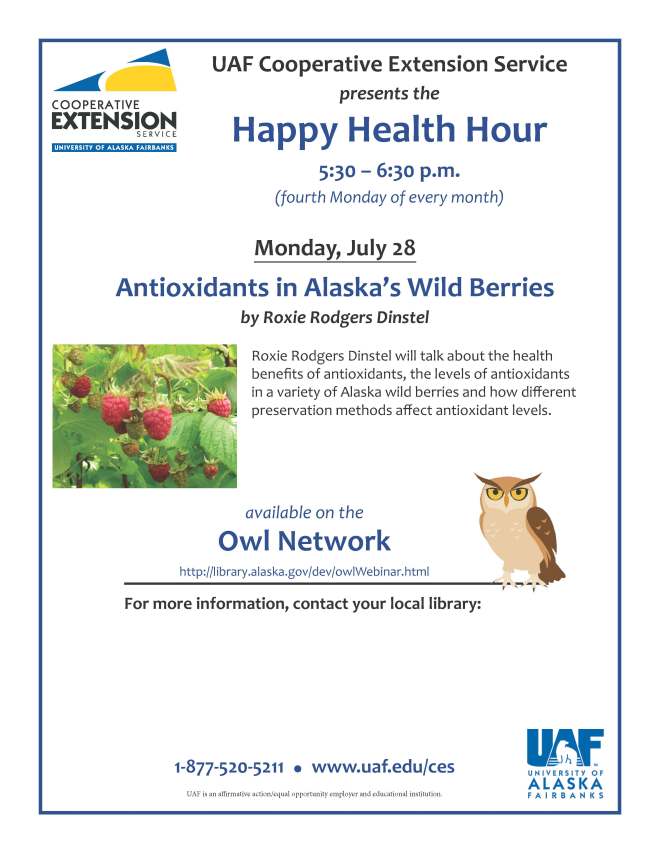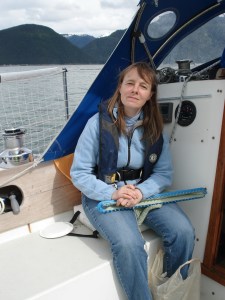
 After nearly 3,000 miles and six months of running, the Wilcox family from Sitka reached its finish line Saturday, July 19, in Ocean City, N.J., to complete its cross-country run across the country to raise awareness about genetically modified organisms (GMOs) in our food system and the roles of large agribusiness companies, such as Monsanto, in making it difficult for consumers to know which food contains GMOs.
After nearly 3,000 miles and six months of running, the Wilcox family from Sitka reached its finish line Saturday, July 19, in Ocean City, N.J., to complete its cross-country run across the country to raise awareness about genetically modified organisms (GMOs) in our food system and the roles of large agribusiness companies, such as Monsanto, in making it difficult for consumers to know which food contains GMOs.
Fifteen-year-old David Wilcox decided he wanted to run across country back in 2010, when he read about another teenage runner to complete the USA crossing, so he and his father, Brett, 53, started training. In January, Brett quit his job as a behavioral health clinician and David’s mom, Kris, put her cleaning business on hold, and the family rented out its home in Sitka. Brett and David started the run on Jan. 18 in Huntington Beach, Calif., and started running about 20 miles a day, six days a week. While Brett and David ran, Kris and David’s younger sister, Olivia, 13, drove ahead on the course in the used pick-up truck and trailer the family purchased for the trip. Along the way, Brett and David took turns pushing a runner’s stroller loaded with their supplies for the day, water bottles, lunch, some GMO-free lettuce seeds, GMO literature, a few copies of Brett’s book, We’re Monsanto: Feeding the World, Lie After Lie, Book One, and the 15-year-old family dog, Angel. (Note, after awhile, Angel decided she didn’t like riding in the stroller and preferred riding in the truck, so the Wilcox family adopted a new dog, Jenna, while in Texas.)
 “Being able to run 20 miles with David is a good thing,” Brett said. “Running with him for 20 miles a day, day after day for six months across 13 states is a great thing. I got to know David far better than I would have in our routines back in Sitka. I have a lot of respect for David for sticking with it even when it was tough going. Of course our run would not have been possible if Kris and Olivia had not been there to support us. Our last day’s run included a big radio interview and a police escort to the beach. Kris and several other runners joined in and ran with us. We passed through a cheering crowd as we entered the boardwalk. It was a special moment. Of course, the fact that Kris and I celebrated our 25th wedding anniversary on the same day we finished our run gave the whole occasion a fairy tale sort of ending.”
“Being able to run 20 miles with David is a good thing,” Brett said. “Running with him for 20 miles a day, day after day for six months across 13 states is a great thing. I got to know David far better than I would have in our routines back in Sitka. I have a lot of respect for David for sticking with it even when it was tough going. Of course our run would not have been possible if Kris and Olivia had not been there to support us. Our last day’s run included a big radio interview and a police escort to the beach. Kris and several other runners joined in and ran with us. We passed through a cheering crowd as we entered the boardwalk. It was a special moment. Of course, the fact that Kris and I celebrated our 25th wedding anniversary on the same day we finished our run gave the whole occasion a fairy tale sort of ending.”
The Wilcox family decided to use the run to raise awareness about our food supply because the family is vegetarian, and they don’t like seeing more GMOs enter the food supply, and consumers not being able to find out which foods have GMOs. “Running For a GMO Free USA was the perfect cause for us. We learned that virtually all people — regardless of location — oppose chemically-saturated genetically modified organisms,” Brett said.
Trying to find GMO-free food on the run did become an issue for the family, and for part of the trip they stopped eating corn tortillas because of how much of our nation’s corn now has GMOs (they did find some Navajo corn tortillas they decided to try). GMOs also are in soy, sugar beets, and several other plants, and they may soon be coming to potatoes used by large fast food corporations. Along the way, the Wilcox family passed through St. Louis just in time to participate in the annual March Against Monsanto (an international event on May 24 this year) right outside Monsanto headquarters. Last year, the Wilcox family hosted a March Against Monsanto event in Sitka.
 When they planned the run, the Wilcox family hooked up with several anti-GMO groups across the country, and those groups helped connect the family to local media outlets and runners where they could spread their message. The anti-GMO groups helped the Wilcox family raise some funds and find places to stay for the trip, and there were two Indiegogo crowd-funding campaigns coordinated by Owen Kindig of Sitka (the first campaign raised $7,500 when it closed in January, and the current campaign still has 40-plus days left to run and has raised roughly $1,400). Along the way, Brett and Kris regularly updated the family’s Running the Country blog and Facebook page. Different media groups covered the run (here’s a link to our story before the run), and the media coverage increased as Brett and David neared the finish line. In recent weeks there has been coverage from small media outlets and large ones, such the Philadelphia Inquirer and Runner’s World magazine. Here is a link to the KCAW-Raven Radio story that aired July 21 about the Wilcox family run.
When they planned the run, the Wilcox family hooked up with several anti-GMO groups across the country, and those groups helped connect the family to local media outlets and runners where they could spread their message. The anti-GMO groups helped the Wilcox family raise some funds and find places to stay for the trip, and there were two Indiegogo crowd-funding campaigns coordinated by Owen Kindig of Sitka (the first campaign raised $7,500 when it closed in January, and the current campaign still has 40-plus days left to run and has raised roughly $1,400). Along the way, Brett and Kris regularly updated the family’s Running the Country blog and Facebook page. Different media groups covered the run (here’s a link to our story before the run), and the media coverage increased as Brett and David neared the finish line. In recent weeks there has been coverage from small media outlets and large ones, such the Philadelphia Inquirer and Runner’s World magazine. Here is a link to the KCAW-Raven Radio story that aired July 21 about the Wilcox family run.
 Brett and David trained for the run, but soon realized their training was a little lacking in LSD (long, slow, distance) runs. David won the Southeast Conference (Region V) cross-country running title in October, but most of his runs during the season were about five miles. Brett, a regular bike commuter, also ran shorter distances, and he and David had one or two longer runs a week. Running 20 miles a day, six days a week resulted in a lot of blisters, several worn-out pairs of shoes, and a couple of injuries along the way. Brett was hobbled early in the run by a bad foot, David had a bad leg, and Brett said he plans to have minor surgery in the near future for another injury.
Brett and David trained for the run, but soon realized their training was a little lacking in LSD (long, slow, distance) runs. David won the Southeast Conference (Region V) cross-country running title in October, but most of his runs during the season were about five miles. Brett, a regular bike commuter, also ran shorter distances, and he and David had one or two longer runs a week. Running 20 miles a day, six days a week resulted in a lot of blisters, several worn-out pairs of shoes, and a couple of injuries along the way. Brett was hobbled early in the run by a bad foot, David had a bad leg, and Brett said he plans to have minor surgery in the near future for another injury.
“I had a couple of months where I couldn’t run, so instead I just walked,” David said. “Probably the best day for me was the day the fourth chiropractor fixed me. He was really nice to us, he let us take a shower. I told him where it hurt, and he told me what was wrong and he told me he was going to fix it and I was sort of wondering if he could really fix it. A muscle that’s supposed to be on the inside of my hip was on the outside. He pulled it over and told me I was fixed. Then he adjusted something else that I didn’t even know was wrong. He also worked on my mom and dad.”
As the miles piled up, the Wilcox family enjoyed the scenery. But sometimes the weather was a bit too hot for folks used to a temperate rain forest and then there were the ticks.
“Pennsylvania was probably the most beautiful state, but I could never live there because it’s too hot and humid,” David said. “I can’t wait to get back to Sitka so I can run the trails and not have to worry about ticks.”
 Now that the Wilcox family is done with the run, the next plan is to go to Washington, D.C., to talk with members of Congress and various agencies about GMOs. They already have meetings scheduled with Rep. Don Young and Sen. Lisa Murkowski, and hope to add a meeting with Sen. Mark Begich. “It will be fun to pass on to them what we learned from our cross-country run,” Brett said.
Now that the Wilcox family is done with the run, the next plan is to go to Washington, D.C., to talk with members of Congress and various agencies about GMOs. They already have meetings scheduled with Rep. Don Young and Sen. Lisa Murkowski, and hope to add a meeting with Sen. Mark Begich. “It will be fun to pass on to them what we learned from our cross-country run,” Brett said.
The family also will be doing more fundraising to help pay for the trip. “Our run is now over but we’ve spent far more than we’ve received from donations,” Brett said. “If you’d like to help us out with our expenses, please donate online at RunningTheCountry.com or at Indiegogo.com. The name of our Indiegogo fundraising campaign is ‘Help the Wilcox Family Finish Strong.’ Thanks to all the people who have helped us help David achieve his big dream to run across the USA.”



















You must be logged in to post a comment.